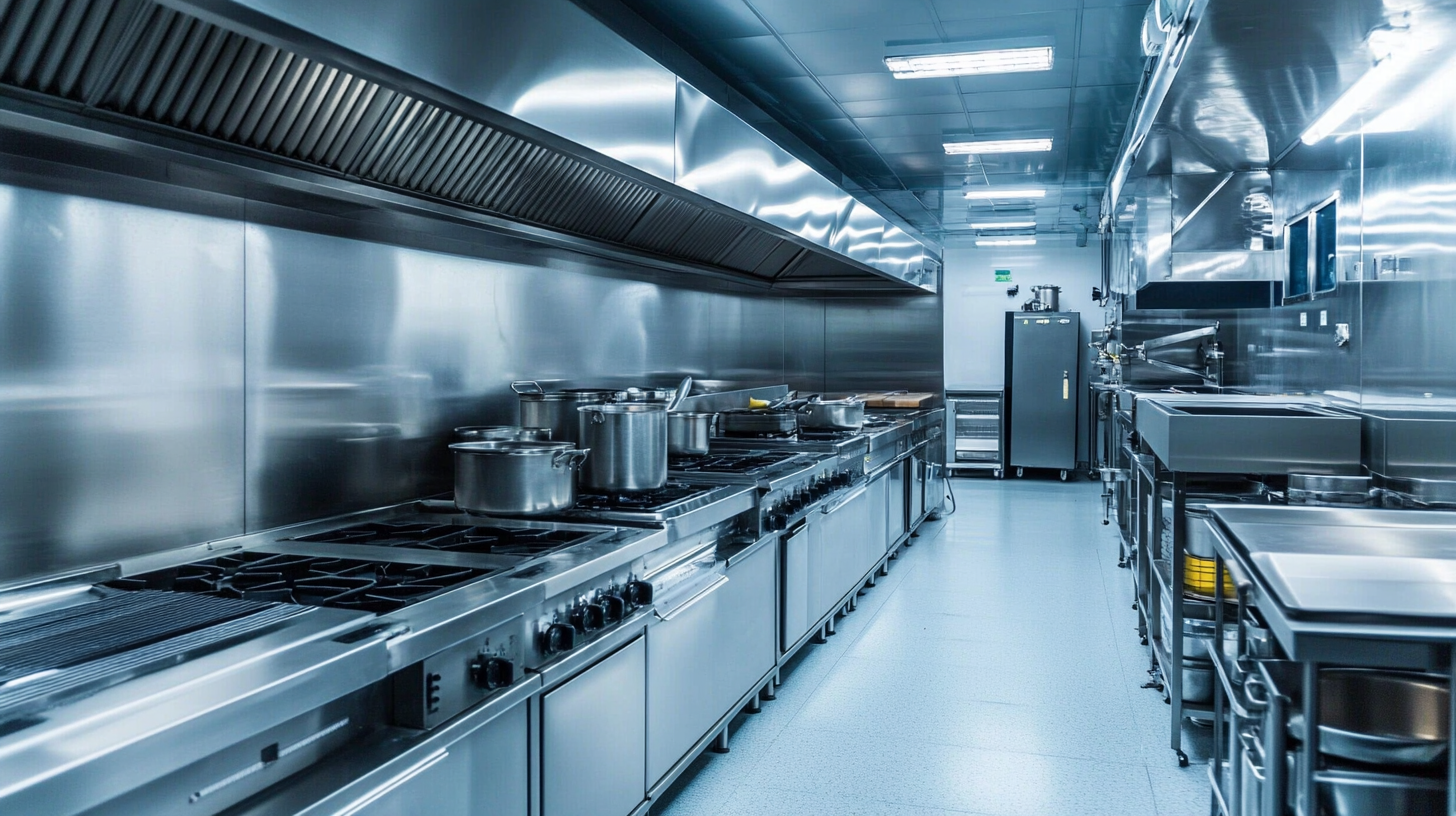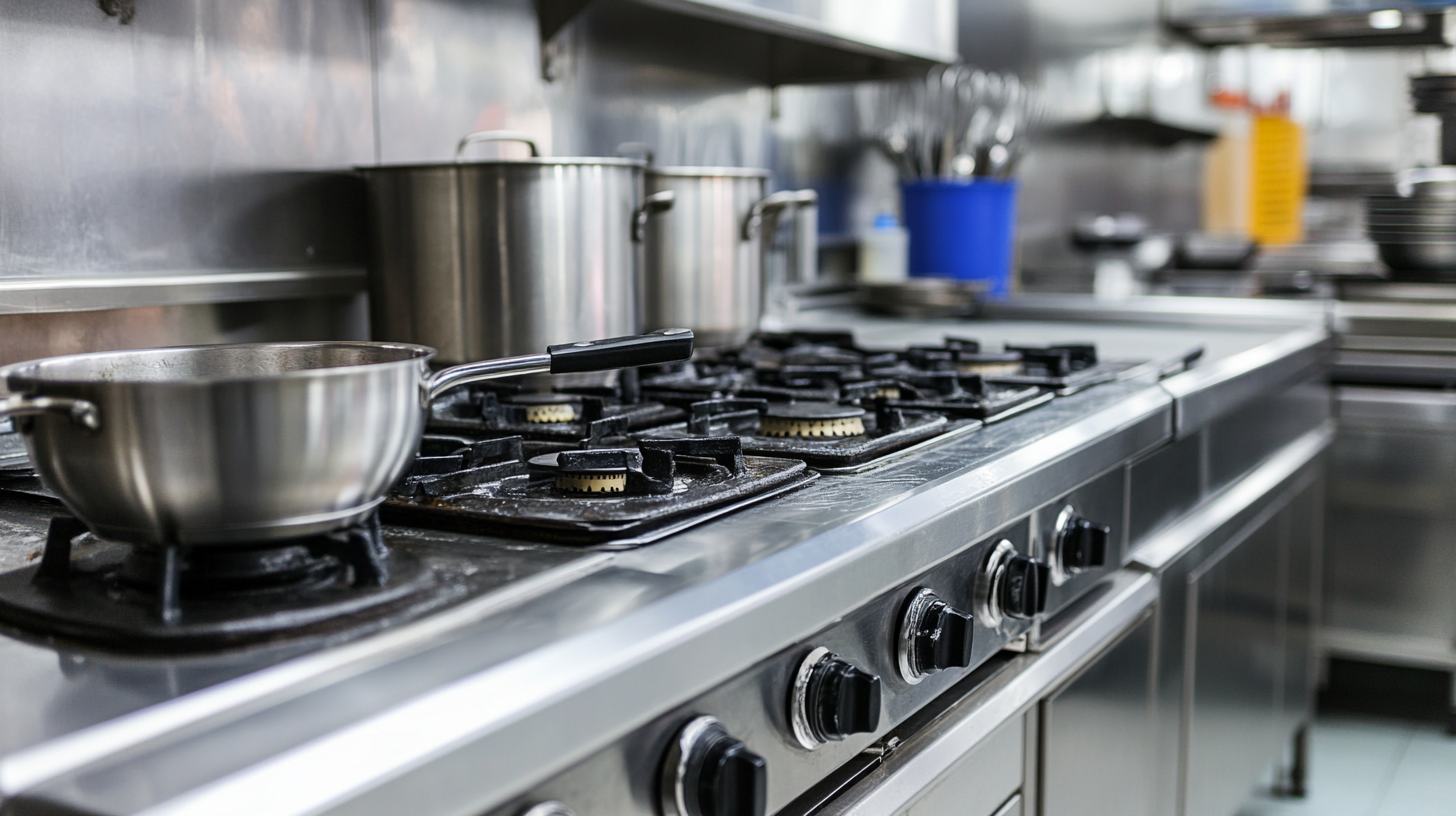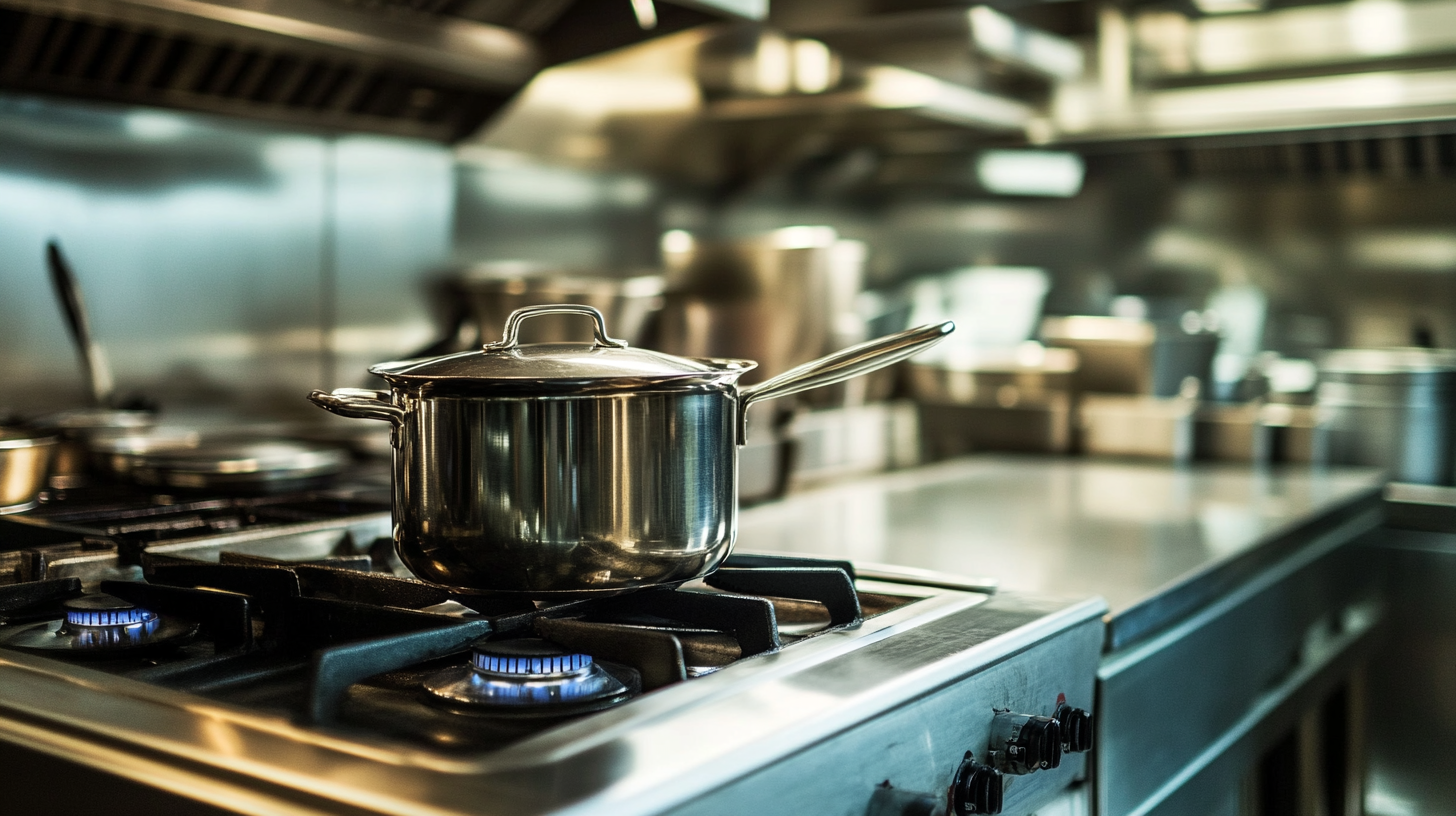Commercial Kitchen Ware Market Analysis by 2025 Unveiling Trends and Insights for Success
The global Commercial Kitchen Ware market is projected to witness substantial growth, driven by the increasing demand for professional cooking solutions in restaurants, catering services, and food production facilities. According to a recent report by ResearchAndMarkets, the market size for commercial kitchen equipment is expected to reach $xx billion by 2025, with a compound annual growth rate (CAGR) of xx%. As operators seek to optimize kitchen efficiency and enhance the dining experience, the diversity of products available—from heavy-duty cooking appliances to innovative storage solutions—plays a crucial role. Understanding the characteristics and applications of different types of Commercial Kitchen Ware is vital for restaurateurs and kitchen managers aiming to remain competitive. This blog will unveil key trends and insights into the various types of commercial kitchen products, helping businesses capitalize on emerging opportunities within this dynamic sector.

Trends Shaping the Commercial Kitchen Ware Market by 2025: A Data-Driven Overview
The commercial kitchen ware market is poised for significant evolution as we approach 2025. With consumer preferences continuously shifting and the demand for sustainable and innovative products increasing, businesses must stay ahead of these trends. According to industry forecasts, the global home decor market—which includes kitchen ware—is expected to reach $1,097.51 billion by 2032. This surge highlights the growing importance of aesthetics and function in commercial kitchen environments.

Tip: To capitalize on these trends, consider sourcing eco-friendly materials and products that resonate with the rise of sustainability among consumers. Research indicates that businesses prioritizing such initiatives can enhance their brand image and attract a more conscientious clientele.
Moreover, as outlined in the Deloitte 2025 US Retail Industry Outlook, digital transformation is another critical focus area. Companies in the kitchen ware domain should invest in e-commerce platforms and digital marketing strategies to boost visibility and sales. Engaging with consumers through online channels will not only broaden market reach but also ensure a deeper understanding of evolving consumer behaviors.
Tip: Businesses should leverage data analytics to inform product development and marketing strategies, ensuring alignment with consumer expectations and trends. Keeping abreast of consumer insights will be crucial in driving successful innovations in the commercial kitchen ware industry.
Examining the Impact of Sustainability on Commercial Kitchen Supplies Demand
 The demand for commercial kitchen supplies is increasingly influenced by sustainability, as both consumers and businesses recognize the importance of eco-friendly practices. According to a recent market report, the global demand for sustainable kitchenware is projected to grow at a CAGR of 7.5% through 2025. This trend highlights a significant shift in consumer preferences towards environmentally responsible products, which not only reduce waste but also enhance operational efficiency in commercial kitchens.
The demand for commercial kitchen supplies is increasingly influenced by sustainability, as both consumers and businesses recognize the importance of eco-friendly practices. According to a recent market report, the global demand for sustainable kitchenware is projected to grow at a CAGR of 7.5% through 2025. This trend highlights a significant shift in consumer preferences towards environmentally responsible products, which not only reduce waste but also enhance operational efficiency in commercial kitchens.
As sustainability becomes a focal point, manufacturers are exploring innovative materials and production processes. Data from industry experts indicate that 60% of commercial kitchen operators are now prioritizing sustainable sourcing when purchasing supplies. For instance, the shift towards biodegradable and recyclable materials in packaging is not just beneficial for the environment, but also helps businesses build a positive brand image. This transformation not only addresses consumer demand but also aligns with corporate social responsibility initiatives that aim to promote sustainability across the food service sector.
In this evolving landscape, companies that adapt to these sustainability trends can position themselves for success. The focus on eco-friendly commercial kitchen supplies not only meets the immediate demands of modern consumers but also contributes to long-term operational cost savings and a reduction in carbon footprints. As industry leaders like those emerging in new sectors embrace these changes, the future of the commercial kitchen ware market looks promising for those willing to innovate and invest in sustainable practices.
The Role of Technological Advancements in Enhancing Kitchen Equipment Efficiency
The commercial kitchen ware market is undergoing a transformative phase, driven significantly by technological advancements that enhance equipment efficiency. Energy-efficient kitchen devices not only reduce carbon footprints but also improve operational performance, which is crucial for the sustainability of modern restaurant operations. As the industry gears towards a more eco-friendly model, integrating energy-efficient equipment can lead to significant decreases in CO2 emissions, fostering a sustainable dining experience.
Tips for restaurant owners include investing in smart kitchen appliances that optimize usage patterns and minimize energy consumption. Adopting automated solutions can streamline kitchen workflows, greatly enhancing productivity. Furthermore, keeping abreast of the latest technologies, such as AI and predictive analytics, enables establishments to not only improve service delivery but also to manage inventory more effectively, ultimately reducing waste and operating costs.
In addition, operators should consider participating in training programs that focus on new technologies to fully leverage their benefits. Investing in staff training ensures that the entire team can effectively use modern equipment, maximizing both efficiency and innovation in operations. With these advancements, restaurants can position themselves for success in an increasingly competitive market.
Global Market Dynamics: Asia-Pacific's Growing Influence in Kitchen Ware Production
The kitchen ware market is experiencing a notable transformation, particularly in the Asia-Pacific region, which is quickly becoming a pivotal player in global production dynamics. This shift is fueled by rising consumer demand for innovative cooking solutions and durable kitchen tools. Manufacturers in countries like China and India are ramping up their production capabilities, responding to both domestic needs and increasing exports. As these economies continue to grow, their influence on kitchen ware trends is undeniable, offering a broader array of products tailored to evolving culinary habits.
Moreover, the integration of advanced technologies in kitchen ware manufacturing is enhancing efficiency and product quality. The use of sustainable materials is also gaining traction, aligning with global trends toward eco-friendliness. With a projected boost in the overall commercial kitchen ware market, driven by factors such as an uptick in the food service industry and the rise of home cooking, it’s clear that the Asia-Pacific region will play a significant role in shaping future market dynamics. As businesses and consumers alike seek quality and innovation, the focus will remain on maintaining competitive advantages through strategic production and marketing efforts.
Commercial Kitchen Ware Market Analysis by 2025
| Region | Market Size (2020) | Projected Growth Rate (CAGR) | Major Trends | Key Insights |
|---|---|---|---|---|
| North America | $5.2 Billion | 3.8% | Sustainability Initiatives | Increasing demand for eco-friendly products |
| Europe | $4.7 Billion | 3.5% | Automation in Kitchens | Growth in smart kitchen technologies |
| Asia-Pacific | $6.1 Billion | 5.2% | Emerging Markets | Rapid urbanization and rising disposable incomes |
| Latin America | $2.0 Billion | 4.0% | Local Sourcing of Materials | Focus on reducing imports and boosting local economies |
| Middle East & Africa | $1.5 Billion | 4.5% | Increase in Food Services | Growing restaurant culture and tourism |
Analyzing Consumer Preferences: What Today's Chefs Seek in Kitchen Equipment
In the evolving landscape of the commercial kitchen ware market, understanding consumer preferences is crucial for suppliers and manufacturers. Today's chefs are increasingly prioritizing equipment that enhances efficiency and meets sustainability standards. According to a recent study by Technavio, the global commercial kitchen equipment market is expected to grow by over 6% annually, driven by a shift towards energy-efficient appliances that not only reduce operational costs but also align with eco-conscious practices.
Moreover, chefs today are drawn to multifunctional equipment that integrates advanced technology. A survey by the National Restaurant Association found that 73% of chefs consider technology as a key factor influencing their purchasing decisions. This trend emphasizes the necessity for kitchen ware that supports smart cooking, allowing chefs to streamline their workflow and maintain quality while adapting to the rapid pace of the culinary industry. The demand for innovative kitchen solutions signifies a crucial opportunity for businesses aiming to align with the evolving needs of the culinary professionals who shape the industry.
Commercial Kitchen Ware Market Trends - 2025 Analysis
This bar chart illustrates the preference of today's chefs in purchasing kitchen equipment based on various parameters such as durability, innovation, price, and design, revealing insights for success in the commercial kitchen ware market.
